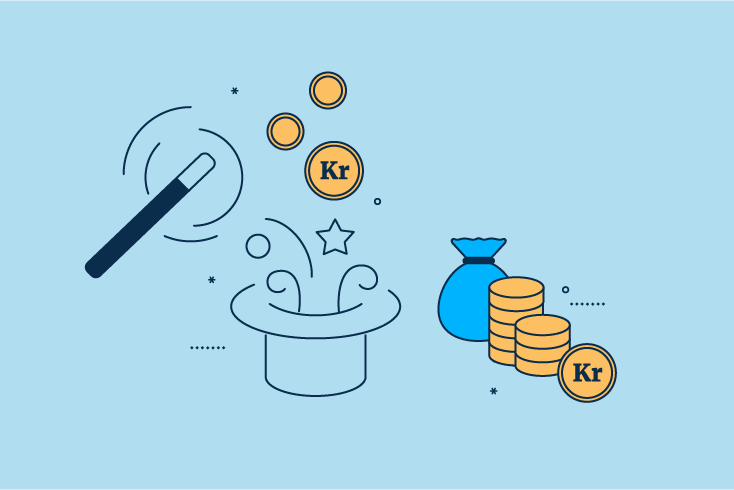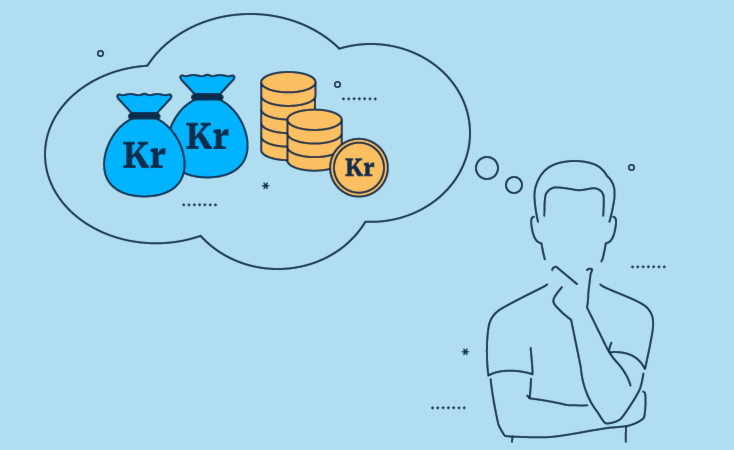How is money created?

In Norway, we have two types of money: Central bank money and deposit money. In practice, there is little difference between the two because they can be converted to the same amount. Nevertheless, there are distinguishing features.
How is central bank money created?
As a central bank, Norges Bank has the exclusive right to issue Norwegian kroner. This means that only Norges Bank can produce Norwegian banknotes and coins. This also means that Norges Bank can issue electronic central bank money in the form of central bank reserves, which are banks' deposits in their accounts with the central bank.
Previously, the value of money was linked to a specific amount of a good - often a precious metal, such as gold or silver. This meant that access to silver or gold limited how much money a central bank could create. This is no longer the case.
Today, laws and regulations limit how much money Norges Bank can create. One of the most important examples is that the Government has given Norges Bank responsibility for maintaining a fairly stable value of the Norwegian krone over time.
This responsibility does not just comprise the money Norges Bank creates itself. Most of the money in the Norwegian economy is not actually central bank money, but rather money created by private banks.
How is deposit money created?
A private bank is authorised by the authorities to issue loans and accept deposits. When banks and bank customers enter into loan agreements, banks create new money whereby borrowers receive new deposits in their accounts.
In return, banks receive promissory notes that oblige customers to repay loan amounts (plus interest) over time. Deposits and promissory notes offset each other. As bank customers draw on their bank deposits to repay their loans, deposit money created when the loan was issued is deleted.
In principle, customers' credit demand and the loans banks grant decide how much money is created. This means that the money supply can vary relative to the total demand in the economy.
Deposit guarantee schemes, bank requirements and the role of Norges Bank as the "bankers' bank" ensures the authorities that all deposit money has the same value and that bank customers can always switch between deposit money and central bank money. This means that deposit money is also affected by the general confidence in the value of money that is needed if money is to fulfil its function.
Can infinite amounts of money be created?
When money is just a number on an account statement, there are few practical limitations as to how much money we can keep and store. But it is not carte blanche.
There are three reasons in particular as to why infinite amounts of money cannot be created:
-
- Money has a price: When bank customers enter into loan agreements with banks, customers must pay interest on the loans. The higher the interest rate, the more expensive it is to create money by taking up a loan. Banks themselves decide the lending rates they offer their customers. However, as the "bankers' bank", Norges Bank sets the interest rate that banks receive on the central bank reserves in their accounts at Norges Bank, which is called the policy rate. The policy rate governs interest rate levels in the entire economy and thus how much bank customers are willing to borrow.
- Banks must satisfy capital requirements: When banks and bank customers enter into loan agreements, there is always a risk that the customers will not be able to repay the loan. If banks' credit losses become so large that it becomes difficult for banks to meet their obligations and perform their tasks, this may trigger a financial crisis with negative spillovers for the wider economy. This is why the authorities require banks to be financed with money (also called capital) from other sources than their customers, for example banks' owners. The amount of capital from these other sources must be sufficient for banks to meet their obligations even in the face of substantial losses. Access to capital from other sources therefore limits the amount of loans banks can grant.
- Banks must satisfy liquidity requirements: An important attribute of money is that it is easy to transfer between individuals. This means that money is often sent from one bank to another. To ensure that all banks can carry out requested transvers, the authorities require banks to hold a certain amount of liquid assets. Examples include marketable securities (ie they can be easily sold) or deposits with the central bank.
Short summary
- A central bank has the exclusive right to issue central bank money
- Together, a bank and a bank customer can create new deposit money by entering into a loan agreement.
- The price of money and requirements imposed by the authorities on banks limit how much money is created
